Day 3 of a three day Summer Tour, our last day. It was cloudier than forecast, particularly in the afternoon, warm & slightly muggy, but it was generally bright and it stayed dry all day. We spent the day down in the Brecks.
On the drive down, we diverted round via some likely areas looking for Stone Curlews. At our first stop, two Eurasian Curlews flew up alarm calling as we got out of the minibus. They landed again in the field opposite. Not quite the ‘curlews’ we had hoped for, but nice to see, particularly as the breeding population of Eurasian Curlew here is so small. A covey of Red-legged Partridge walked out of the crop and into an open ploughed area.
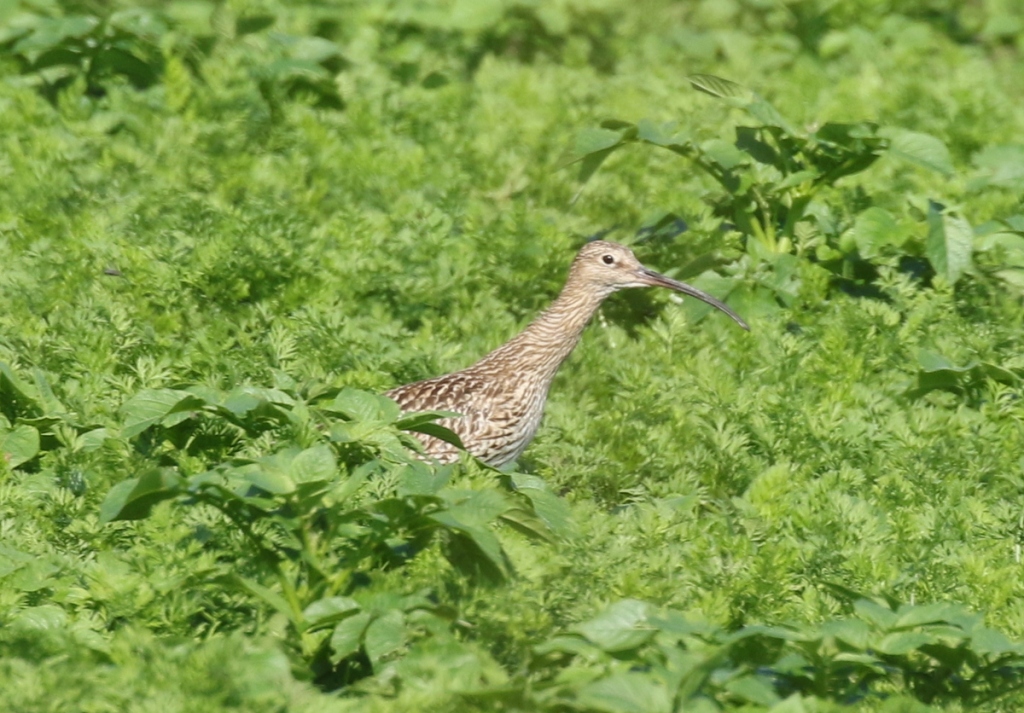
Our next stop was by some pig fields. As we looked out we could see a Stone Curlew preening out in the middle. A great start, we got the scope on it, and while everyone was taking a look, we continued to scan across. We realised there were lots more there too! In the end, we counted at least eleven Stone Curlews scattered around the field, although there may have been more hidden behind the small ridges of dirt and vegetation. They are already starting to gather together post-breeding.
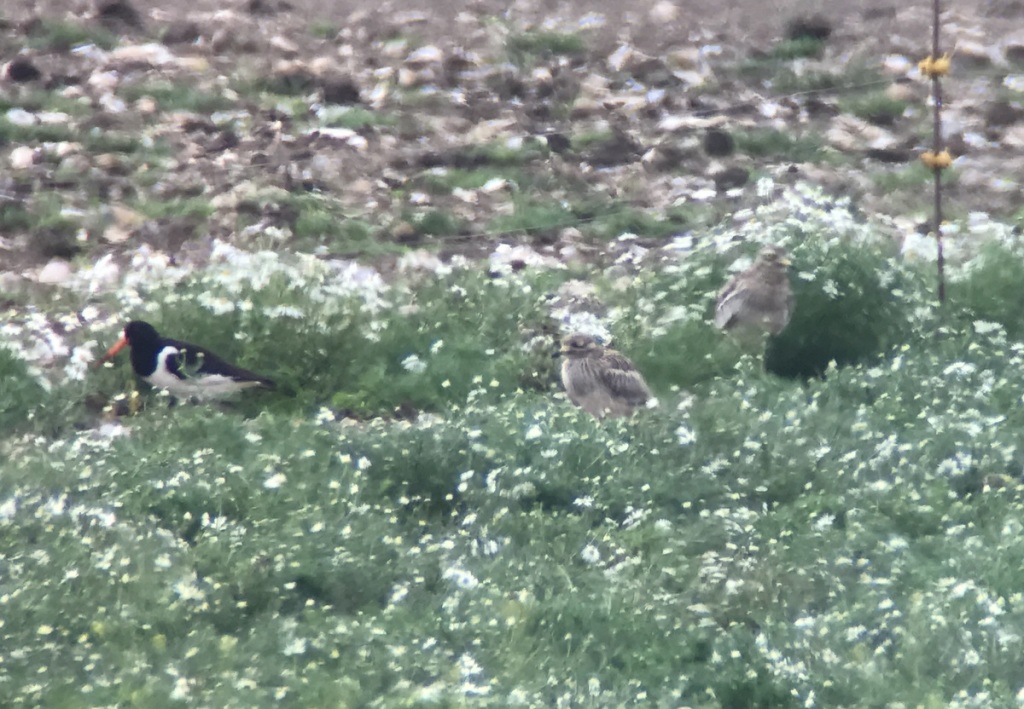
There were a few Oystercatchers in the field with the Stone Curlews too, and several Egyptian Geese. Scanning the bushes in the middle, we noticed a couple of Tree Sparrows perched in the top of one. We got the scope on them for a closer look. When they dropped down out of view, we heard one calling much closer to us and looked up to see another Tree Sparrow on the wires by the road a little further up. Tree Sparrows used to be common here but have disappeared from most of Norfolk now, as they have from much of southern Britain, victims of agricultural intensification. An increasingly rare sight here, so good to see there are some clinging on.
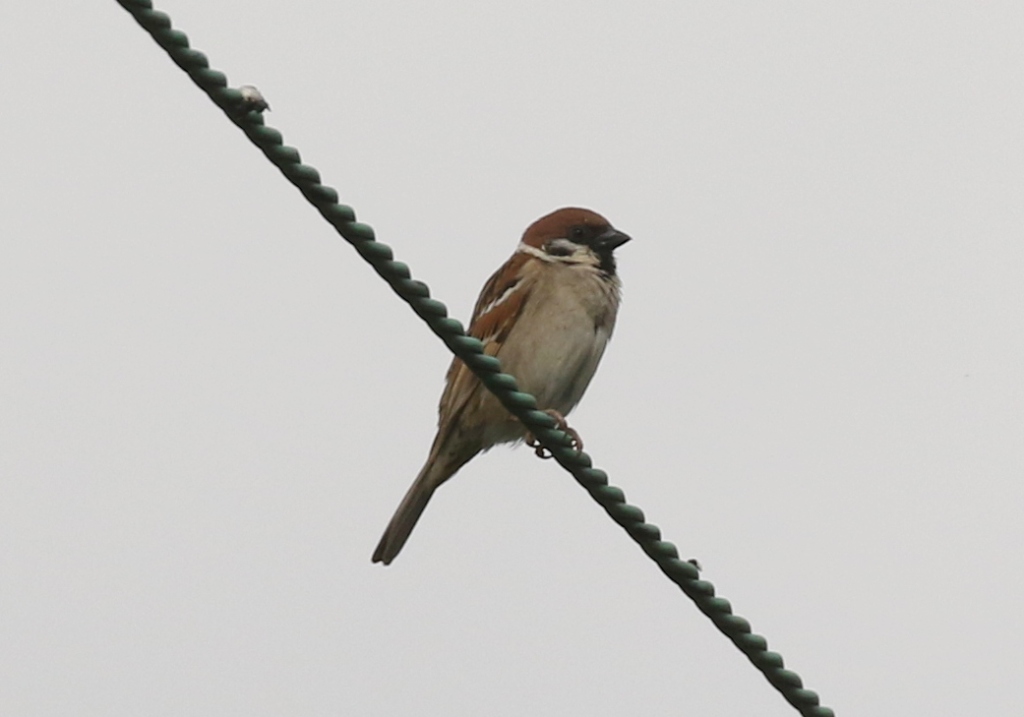
That was a great way to start the day. Having enjoyed some excellent views of the Stone Curlews, we moved on, driving over to Lakenheath Fen next. We stopped for a coffee break at the Visitor Centre, overlooking the feeders. There were several Blue Tits, Great Tits, Goldfinches and 1-2 Greenfinches in the bushes, coming and going.
As we set off to explore the reserve, it had clouded over now – not what we were expecting. Despite the cloud, there was still a good selection of insects – Blue-tailed and Common Blue Damselflies, diminutive skippers on Viper’s Bugloss which refused to sit still and allow us to see the underside of their antennae, Meadow Brown and Ringlet, and a smart Longhorn Beetle (Rutpela maculata).
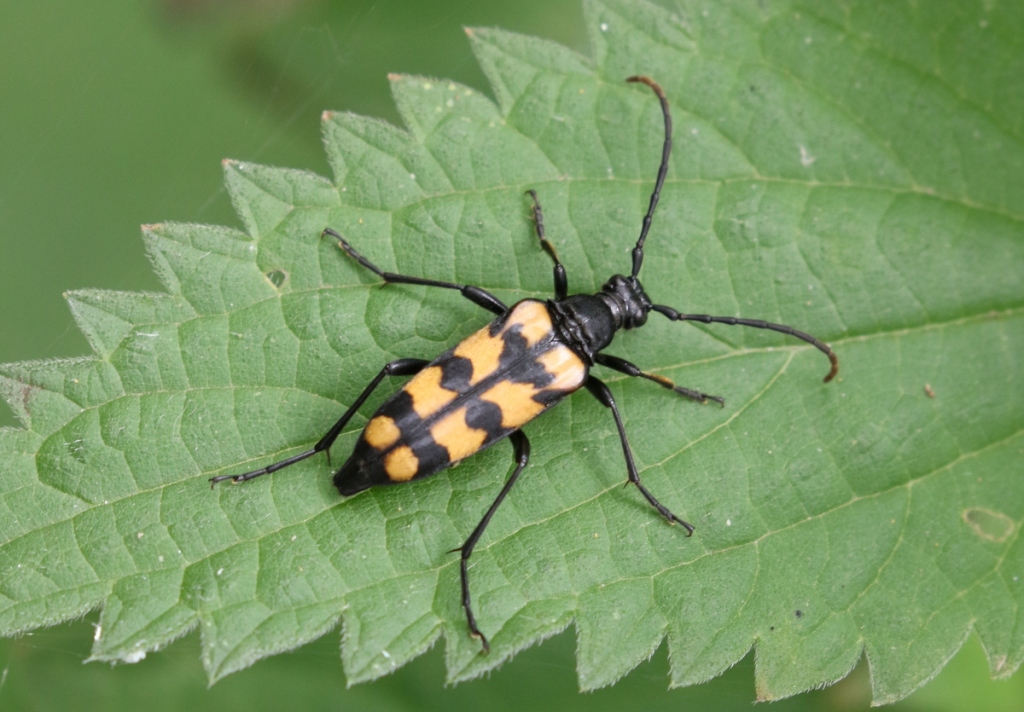
We stopped at New Fen Viewpoint and scanned over the reedbed from the benches. We could hear Blackcap and Common Whitethroat singing in the poplars behind us. A Reed Warbler kept flying in and out of a small island of reeds in the middle of the pool.
A Bittern came up out of the reeds towards the far corner of the reedbed, flying across behind the bushes, before it dropped back in. We saw Bittern flights several times over the next few minutes – this is the best time to see them, when they are feeding young – but it was hard to tell how many birds were involved. One Bittern flew up from the back again, and headed out towards the river. We expected it to land back in the reedbed, but instead it continued over the riverbank, and appeared to drop down just beyond. There are some pools along the river here, so we headed over straight over to see if we could find it.
By the time we got there, there was no sign of it. Perhaps it continued on upstream, or maybe it was just hidden out of view. We stopped here to scan, hoping it might come out of the vegetation or come back from wherever it was feeding. One or two Common Terns were commuting up and down river – one flew past carrying a fish, presumably to feed a hungry youngster on the Washes.
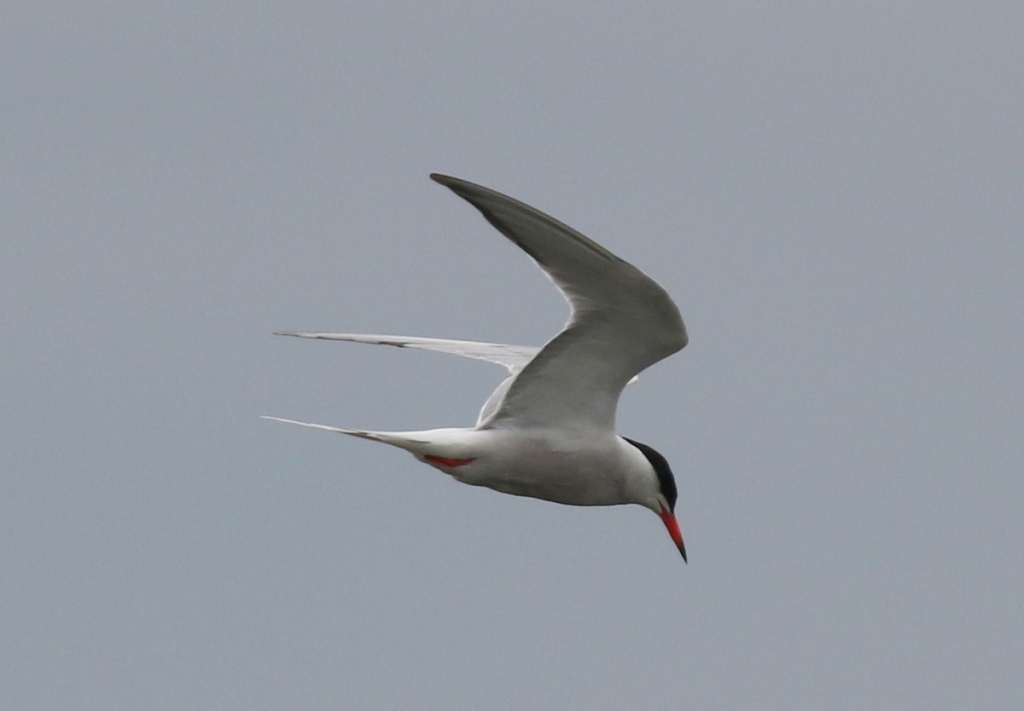
A Cuckoo called from the willows across the river. Most of adults have gone south already, many are already in Europe and some already in Africa, so this one was rather late to still be here. We couldn’t see it in the trees and it went quiet. We did then see another Cuckoo, flying across between the woods right over on the other side of New Fen, but it was too distant to tell whether it was an adult or an early fledged juvenile.
A young Marsh Harrier, dark chocolate brown with a rusty orange head, was exercising its wings, circling back and forth across the river, waiting for its parents to bring in food. A Hobby flew in, hawking for insects ahead of us, low over the washes beside the river, then it flew up over the bank, across over the back of the reedbed and up over West Wood. A Kestrel was hovering behind us too, and then we got the scope on it when it landed in one of the willows across the river.
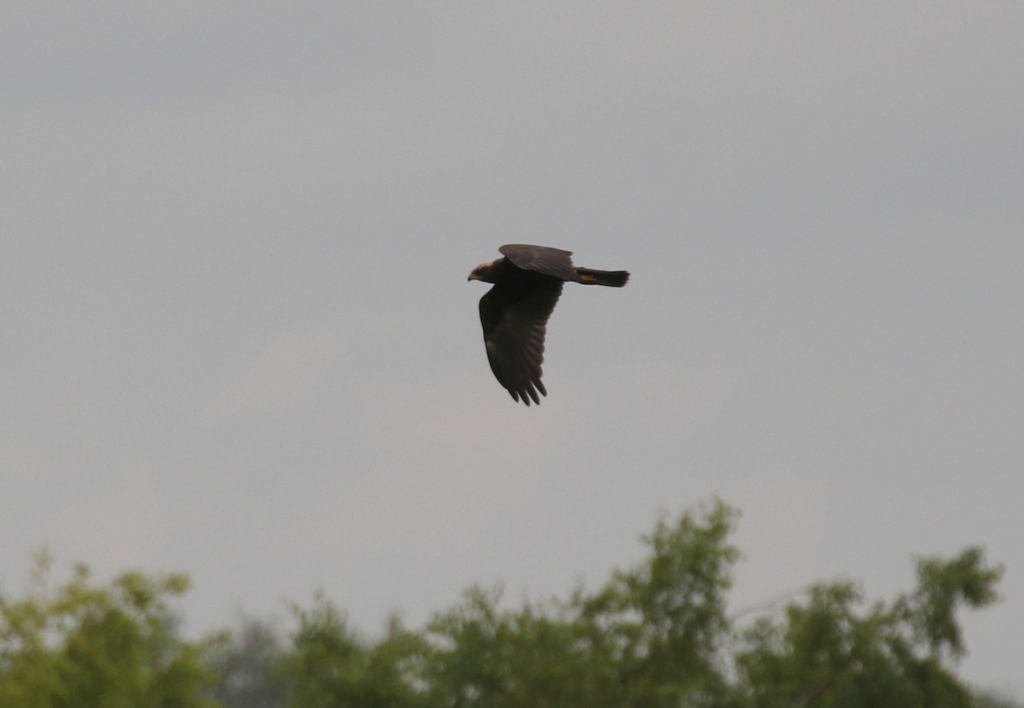
Continuing west along the river bank, we finally had good views of a family of Sedge Warblers in the edge of the reeds below us. A Great Spotted Woodpecker flew into the edge of West Wood, but disappeared into the trees. The other side of West Wood, some of the group saw two Kingfishers chasing over the reeds just beyond, but they had disappeared before we could all catch up.
We cut back in to the reserve at Joist Fen, and got out the sandwiches. We had brought lunch with us today, so we wouldn’t have to hurry back. There were some distant Marsh Harriers out over the reeds and a Red Kite circled high over the railway line. More Reed Warblers zipped about, and another Sedge Warbler flew in and out of the big elder by the last bench, singing. A Kingfisher whizzed low over the reeds across in front of us, before dropping down into the channel where it was lost to view. Almost immediately, it was followed by a second Kingfisher – possibly the two which some of the group had seen earlier.
After lunch, we decided to walk slowly back. Another Kingfisher shot across the path just in front of us, and out over the reeds. We called in at Mere Hide, which is open again, although we had to wait a few minutes to all get in (there were already some people in there and there were six just of us). There were a couple of Greylag families on the water, one with lots of almost fully grown juveniles and the other with only one, before they flew off. Several Reed Warblers were flicking around the water’s edge. There were not so many dragonflies and damselflies flying round the pool today, perhaps not helped by the cloud.
The rest of the walk back to the Visitor Centre was fairly uneventful, and we rewarded our long walk with a sit down and ice cream when we got there (rhubarb & ginger today!). We had to ensure a prompt finish today, so people could get away in good time, but we still had an hour or so of the day left. So on our way back to where we had left the cars this morning, we diverted into the forest.
We stopped by a track, which leads down to a large clearing. For some reason the gate at the top of the track was locked today, so we couldn’t drive in. Instead, we parked by the next ride and walked down through the forest. It was hot and muggy and the mid afternoon lull now, so the trees were rather quiet. We could hear a Nuthatch calling, and a flock of Long-tailed Tits in the pines. The gate into the clearing at the far end was locked too, so we couldn’t get into the clearing, and we had to scan from the fence. A family of Stonechats were on the gate, a female and two juveniles, with the male further down along the fenceline.
We circled back through the trees. There were lots of butterflies on the flowers along the track, Meadow Browns and Ringlets and several skippers. One eventually stayed still long enough so we could get a look at the tips of its antennae – pale on the underside, a Small Skipper.
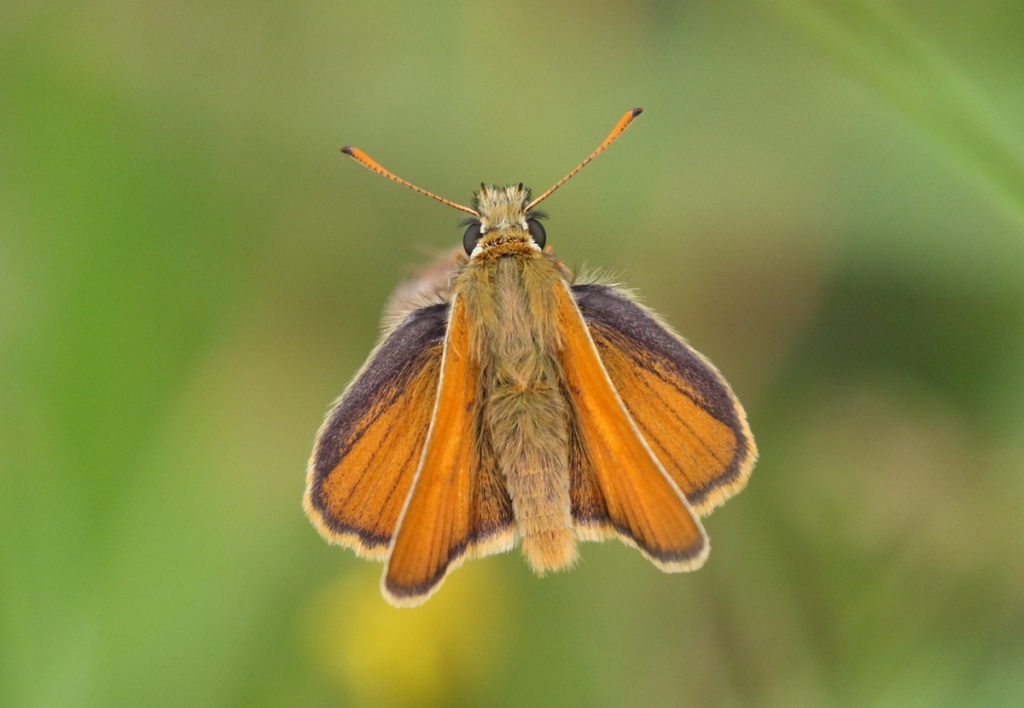
A little further on, we heard a bird calling quietly, and looked up to see a Tree Pipit in the top of a dead tree ahead of us. We got it in the scope and had a closer look at it – it was pumping its tail up and down as it called, and we could see the yellow wash behind the heavier breast streaking, white on the bellow, with pencil fine streaks on the flanks. It flew and landed again on another dead tree right next to us, then flew back and we lost site of it over the trees.
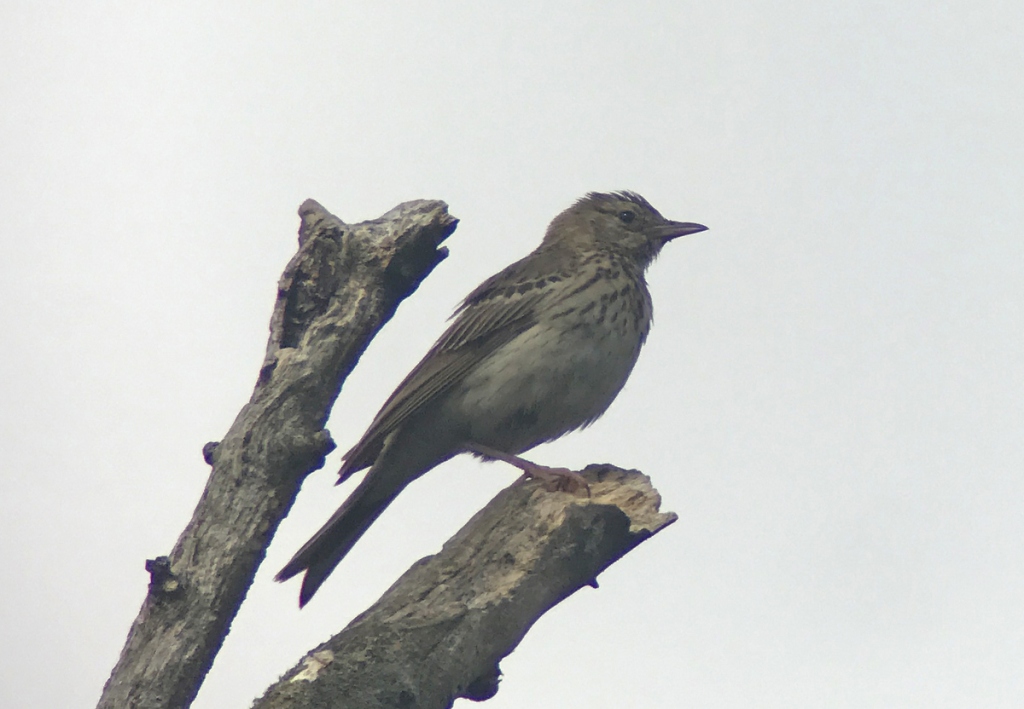
Tree Pipit was one of the birds we had hoped to find down by the clearing. We had been thinking we might have to try to squeeze in one last stop to get it somewhere else on our way back. But we had succeeded at the last here, which meant we could have an unhurried journey back and finish on time. A very enjoyable three days.
















